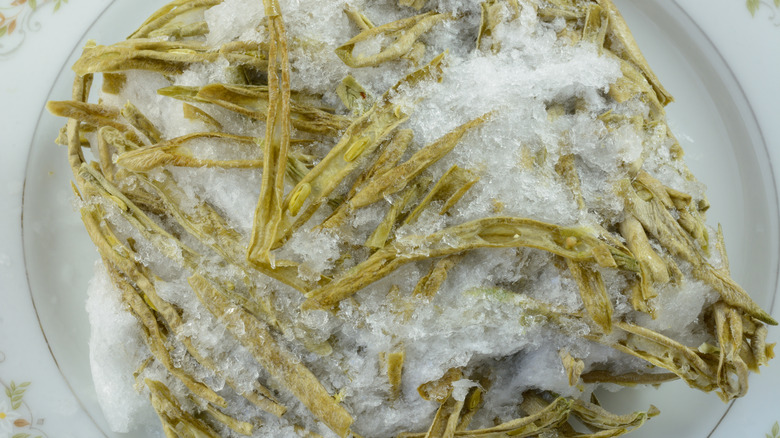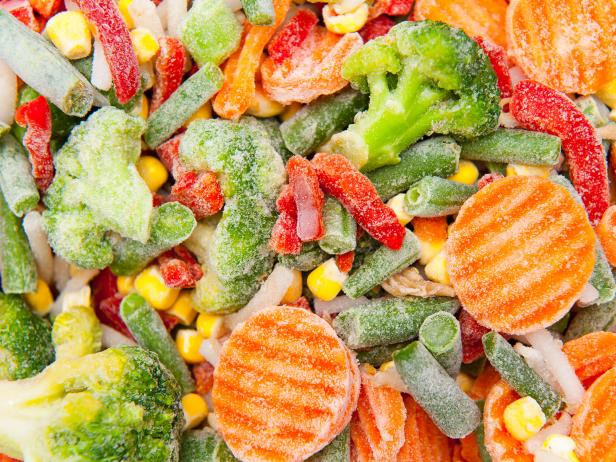Freezer burn itself does not make you sick. It results from air exposure, leading to changes in food texture and flavor.
Freezer burn occurs when food is not properly sealed in the freezer, exposing it to air. This process causes dehydration and oxidation, which can alter the food’s taste and texture. Although freezer-burned food may look unappetizing and lose quality, it’s generally safe to eat.
You might notice white or grayish patches on the surface, indicating freezer burn. While it won’t harm your health, it might not provide the best culinary experience. Understanding freezer burn helps you prevent waste and maintain the quality of your frozen foods. Proper packaging can help minimize this issue and keep your meals tasting their best.

Credit: www.tastingtable.com
The Science Behind Freezer Burn
Freezer burn occurs when food dries out in the freezer. It happens due to air exposure.
Ice crystals form on the food’s surface. This process can change the food’s texture and taste.
Moisture loss leads to dry, tough food. It can also create off-flavors that make food unappetizing.
While freezer burn doesn’t make food unsafe, it affects quality. Foods that suffer from freezer burn may not taste as good.
Proper packaging can help prevent freezer burn. Use airtight bags or containers to keep food fresh.
Health Implications Of Eating Freezer-burned Food
Freezer burn occurs when air touches food. It creates dry spots and changes texture. Eating freezer-burned food is generally safe. The flavor may be affected, but it won’t make you sick.
Freezer burn does not cause foodborne illnesses. Bacteria cannot grow in frozen conditions. Always check for any signs of spoilage before eating.
Some nutritional losses can happen due to freezer burn. Vitamins may degrade over time. The food may lose its taste and texture, making it less enjoyable.
| Nutritional Component | Effect of Freezer Burn |
|---|---|
| Vitamins | May degrade |
| Flavor | Can change |
| Texture | May become dry |
Identifying Freezer Burn
Freezer burn occurs when air touches food. This can change the food’s quality. It often appears as white or grayish spots on the surface. These spots indicate moisture loss.
Texture changes are common with freezer burn. Food may feel dry or tough instead of fresh. Frozen fruits can become mushy, while meats can be chewy.
The flavor of freezer-burned food also suffers. It may taste bland or off. Some foods can even develop a strange odor due to freezer burn.

Credit: www.foodnetwork.com
Preventing Freezer Burn
To prevent freezer burn, use airtight containers or vacuum-sealed bags. This keeps food fresh. Remove as much air as possible before sealing.
Label each item with a date. This helps track freshness. Store food in the back of the freezer. The back stays colder than the front.
| Optimal Freezing Practices | Description |
|---|---|
| Cool Food First | Let food cool before freezing. This keeps the freezer temperature stable. |
| Freeze in Portions | Divide food into small portions. This speeds up freezing and thawing. |
| Use Freezer-Safe Containers | Choose containers made for freezing. They resist cracking and breaking. |
Salvaging Freezer-burned Food
Freezer burn happens when food is not stored properly. It causes dry, gray areas on food. Trimming the affected parts can save some items. Tossing is best for food that looks very bad.
For fruits and veggies, smoothies are a great way to use them. Add freezer-burned produce to a blender. Cooked dishes can also hide freezer burn. Soups and stews benefit from extra ingredients.
| When to Trim | When to Toss |
|---|---|
| Minor freezer burn on meats | Severe freezer burn with discoloration |
| Small areas on fruits | Soft, mushy texture |
| Vegetables with slight dryness | Off smell or flavor |
The Role Of Packaging In Preventing Freezer Burn
Packaging plays a key role in preventing freezer burn. Proper packaging keeps food fresh and safe. Without good packaging, food can develop ice crystals. These crystals change the food’s texture and flavor.</p
Choosing the right materials is essential. Here are the best materials to use:
Freezer Burn And Food Safety Regulations
Freezer burn can affect the quality of food. It occurs when air reaches the food surface. This leads to moisture loss and changes in texture and flavor. While freezer burn may make food less appealing, it does not make it unsafe to eat.
The FDA states that freezer burn does not pose health risks. Foods with freezer burn are safe if cooked properly. Always check for signs of spoilage before consuming.
| FDA Guidelines | Industry Standards |
|---|---|
| Freezer burn is safe to eat. | Maintain a consistent freezing temperature. |
| Inspect food for spoilage. | Use proper packaging to reduce air exposure. |
| Cook food thoroughly. | Label and date all frozen items. |
Myths Vs. Facts: Freezer Burn Edition
Many people believe that freezer burn can make you sick. This is a common misconception. Freezer burn happens when food gets too much air. It causes changes in texture and flavor. Food may look dry or discolored but is still safe to eat.
Some think that freezer burn means the food is spoiled. This is not true. Spoiled food can make you ill, while freezer-burned food is usually just less tasty.
Another myth is that freezer burn indicates bacteria growth. In reality, bacteria cannot grow at freezing temperatures. Always check for signs of spoilage, not just freezer burn.

Credit: www.foodnetwork.com
Conclusion
Freezer burn does not make food unsafe to eat. It primarily affects the quality and taste. While it’s best to avoid eating severely freezer-burned items, they won’t cause illness. Proper food storage can help prevent freezer burn. Keep your food fresh and enjoyable by following best practices in freezing.
